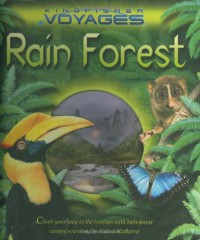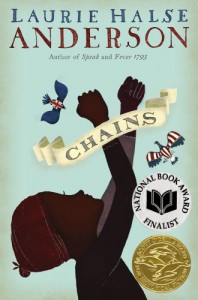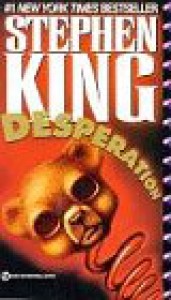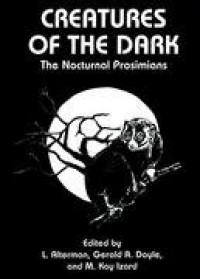Currently reading
Foundation and Empire
Animal Wise: The Thoughts and Emotions of Our Fellow Creatures
2001: A Space Odyssey (Space Odyssey, #1)
 So I know there are tons of reviews and analyses and whatnot about the book and the movie, separately and together. What could I possibly add to the conversation? So I'm just going to share my own personal experience.
So I know there are tons of reviews and analyses and whatnot about the book and the movie, separately and together. What could I possibly add to the conversation? So I'm just going to share my own personal experience. I've never seen the movie in its entirety; it's one of those things I've been meaning and meaning to get around to, but just never have. I love sci-fi but in no way claim to be an expert; my dad got me started on Bradbury and Asimov when I was young, and I've been hooked ever since. So I was a little surprised I'd never gotten to this one for so long. There are so many new and shiny stories, it's easy to leave the classics behind, but I'm trying to beef up my lack.
The truth was, because of the last few chapters and the ending, this book was just okay for me. Ape-men visited by aliens in the beginning? Interesting. Finding a slab on the moon? Okay, I'll keep going. Interactions with Hal? Best scenes in the book for me. But then things sort of started slacking off. Going to Saturn, okay. And then the whole excruciatingly detailed hallucinogenic journey through space junkyards and stars, ending in a strange regression to a cognizant floating powerful baby...what...the...hell?
I know people encourage readers to engage in the mysticism, greater meaning, philosophy, blah, blah, blah. I don't really read sci-fi for mystical journeys. And so the ending just didn't do it for me. There was no resolution of character or plot, nothing I could hold on to...perhaps it was just over my head. So forgive me, die-hard Clarke fans, I tried. I wanted to like it, expected to like it. But in the end, I didn't walk away feeling I would ever read it again or recommend it to anyone.
 This book became tiresome rather quickly for me. Each episode of the children's wishing is formulaic: kids wish for something, it doesn't turn out like they imagined it would, a lesson is learned. Repeat ad infinitum. Toss in some casual racism for variety. I am aware the book was written in 1902 and is reflective of the prevailing attitudes of the time period. I am also aware that it is a children's classic and important to the development of early children's literature. However, I can't imagine recommending this book today. Nor do I see ever reading it again. On the plus side, the Psammead (or sand-fairy) was quite the original wishing medium, both in appearance and behavior. Not your typical genie or traditional fairy in a fairy-story, neither all evil or good, mostly concerned with himself and his own welfare, but not truly malicious.
This book became tiresome rather quickly for me. Each episode of the children's wishing is formulaic: kids wish for something, it doesn't turn out like they imagined it would, a lesson is learned. Repeat ad infinitum. Toss in some casual racism for variety. I am aware the book was written in 1902 and is reflective of the prevailing attitudes of the time period. I am also aware that it is a children's classic and important to the development of early children's literature. However, I can't imagine recommending this book today. Nor do I see ever reading it again. On the plus side, the Psammead (or sand-fairy) was quite the original wishing medium, both in appearance and behavior. Not your typical genie or traditional fairy in a fairy-story, neither all evil or good, mostly concerned with himself and his own welfare, but not truly malicious.
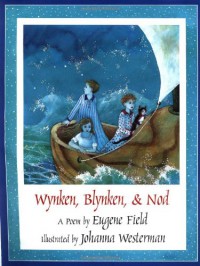 When I was a zookeeper several years ago, I worked with three Brazilian golden-rumped agoutis* named Winky, Blinky, and Nod. Someone mentioned that the names had come from a story; I never followed up on it, but today I ran across this book and was delighted to have that little piece of my past pop up. The illustrations in this book are lovely, giving just the right sense of eerie nighttime magic. I greatly enjoyed this short picture book.
When I was a zookeeper several years ago, I worked with three Brazilian golden-rumped agoutis* named Winky, Blinky, and Nod. Someone mentioned that the names had come from a story; I never followed up on it, but today I ran across this book and was delighted to have that little piece of my past pop up. The illustrations in this book are lovely, giving just the right sense of eerie nighttime magic. I greatly enjoyed this short picture book.*An agouti is a type of rodent found in Central and South America, somewhat resembling a cross between a guinea pig and a small deer, with longer legs and delicate hands.
 I read this book only because of the Southern connection, and the fact that it was recommended to me. While some parts of it were slightly amusing, the author overplayed the Southern rich belle trope a bit much. I can identify with some of her Southernisms (aversion to cold weather, unfamiliarity with Vermont culture), but I was never part of a wealthy country club, so I did not particularly identify with that part of her life; in fact, initially, I found her to be a bit of an off-putting snob. By the end of the book, I was really annoyed with the main character overall; she was so hysterical, at times. The ending itself was somewhat unbelievable, given the way that the story was building until then. I wanted to like it more than I did.
I read this book only because of the Southern connection, and the fact that it was recommended to me. While some parts of it were slightly amusing, the author overplayed the Southern rich belle trope a bit much. I can identify with some of her Southernisms (aversion to cold weather, unfamiliarity with Vermont culture), but I was never part of a wealthy country club, so I did not particularly identify with that part of her life; in fact, initially, I found her to be a bit of an off-putting snob. By the end of the book, I was really annoyed with the main character overall; she was so hysterical, at times. The ending itself was somewhat unbelievable, given the way that the story was building until then. I wanted to like it more than I did. 1.5 stars
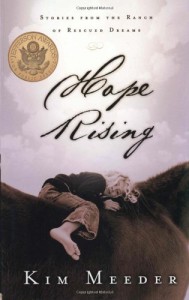 I completely forgot that I had read this book years ago until I ran across the phrase "horses can be very healing." Then, bam! The cover of this book leapt to my mind. Sad stories of abused children who come to a horse farm to heal their spirits (or something along those lines). I seem to remember it being very sentimental. I may have shed a tear or two at the beginning, but I recall it getting wearisome by the end. Lots of Christian overtones. Again, it's been years since I've read this, so I may be off the mark. However, I am not really motivated to read it again.
I completely forgot that I had read this book years ago until I ran across the phrase "horses can be very healing." Then, bam! The cover of this book leapt to my mind. Sad stories of abused children who come to a horse farm to heal their spirits (or something along those lines). I seem to remember it being very sentimental. I may have shed a tear or two at the beginning, but I recall it getting wearisome by the end. Lots of Christian overtones. Again, it's been years since I've read this, so I may be off the mark. However, I am not really motivated to read it again.
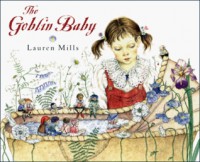 This book was pretty bizarre; ran across it randomly. I was motivated to read it because the title immediately brought to mind Maurice Sendak's [b:Outside Over There|120711|Outside Over There|Maurice Sendak|http://d202m5krfqbpi5.cloudfront.net/books/1356057847s/120711.jpg|1060865]. This book has none of the haunting power or extraordinary artwork of that one, however. It's not bad; I actually enjoyed the part with the toads. But the gnomes were too cutesy for me, and the ending too light and fluffy. It seemed as if the book started to build on a slightly disturbing tack, and then abruptly changed its course: "Never mind!" Off-putting. I will say that some of the illustrations were lovely; however, not enough to salvage the story.
This book was pretty bizarre; ran across it randomly. I was motivated to read it because the title immediately brought to mind Maurice Sendak's [b:Outside Over There|120711|Outside Over There|Maurice Sendak|http://d202m5krfqbpi5.cloudfront.net/books/1356057847s/120711.jpg|1060865]. This book has none of the haunting power or extraordinary artwork of that one, however. It's not bad; I actually enjoyed the part with the toads. But the gnomes were too cutesy for me, and the ending too light and fluffy. It seemed as if the book started to build on a slightly disturbing tack, and then abruptly changed its course: "Never mind!" Off-putting. I will say that some of the illustrations were lovely; however, not enough to salvage the story.
 The first part was fair; I had read A Walk in the Woods and enjoyed it - this Bryson travelogue didn't make me laugh nearly as much, which doesn't mean it was bad. I am very interested in Australia in general, and hoped this book would further my knowledge a bit. Unfortunately, however, the middle part of the book was sort of bad for me - it lagged and sagged terribly. However, the final ~third of the book was very interesting and completely enjoyable, so much so that they almost made up for the long, dragging middle section. There are a number of sites and attractions I would now be very interested in seeing, although I wonder how much things might have changed in the ensuing years since this book was published. Apparently, I am in the minority, as most other reviewers seem to have given this book more than three stars. Ah, well.
The first part was fair; I had read A Walk in the Woods and enjoyed it - this Bryson travelogue didn't make me laugh nearly as much, which doesn't mean it was bad. I am very interested in Australia in general, and hoped this book would further my knowledge a bit. Unfortunately, however, the middle part of the book was sort of bad for me - it lagged and sagged terribly. However, the final ~third of the book was very interesting and completely enjoyable, so much so that they almost made up for the long, dragging middle section. There are a number of sites and attractions I would now be very interested in seeing, although I wonder how much things might have changed in the ensuing years since this book was published. Apparently, I am in the minority, as most other reviewers seem to have given this book more than three stars. Ah, well.
 "The children of Afghanistan were allowed to carry a Kalashnikov but not homework."
"The children of Afghanistan were allowed to carry a Kalashnikov but not homework." Published in 2002, this book is a pretty bleak look at Afghanistan, mostly the last decade or so pre-9/11, though there is a little of it (9/11) at the very end. It chronicles the experiences of Zoya, an Afghani activist from a very young age working to improve the lives of women in her country. I would be interested to learn any updates on Zoya's story, how things might have changed for her and those she knows, her country. Not a happy book, but perhaps a necessary one; having read a number of Middle Eastern women's memoirs (after latching onto the subject during college when I was fortunate to take a Middle Eastern women's studies class), I have to say those set in Afghanistan seem to be among the most desolate.
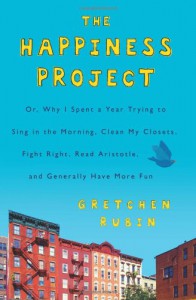 Not terribly impressed. Probably wouldn't recommend this to anyone. Interesting idea but I could not connect with the author much.
Not terribly impressed. Probably wouldn't recommend this to anyone. Interesting idea but I could not connect with the author much.
 Creepy, different, haunting, weird, even a little disturbing. But original. Some really fantastic artwork. And mermaids!
Creepy, different, haunting, weird, even a little disturbing. But original. Some really fantastic artwork. And mermaids!





